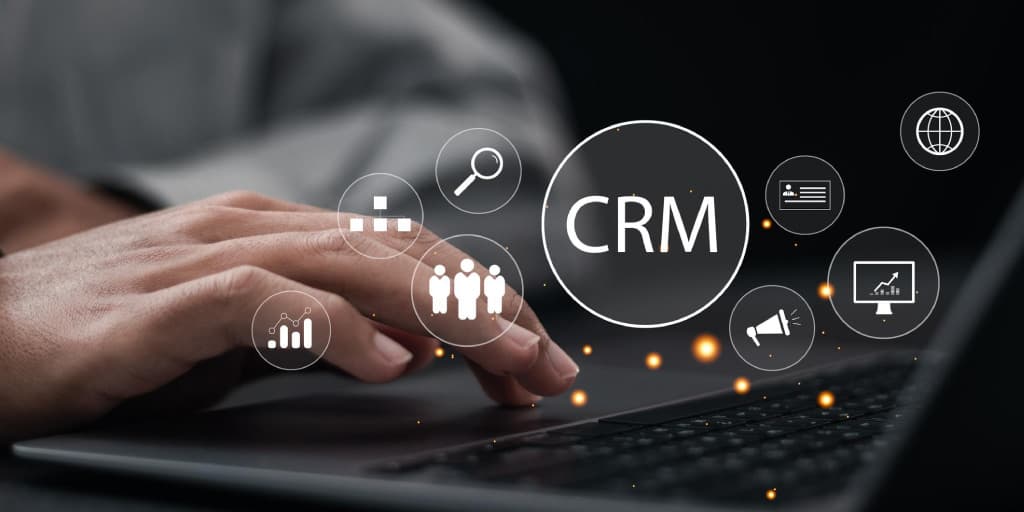Are you stuck juggling multiple spreadsheets, tasks taking forever, and gut feelings guiding your decisions? There’s a smarter way. Enterprise Resource Planning (ERP) software can transform your business into a streamlined machine, with all your data in one place and powerful insights to fuel growth. But hold on a sec, how much does an ERP software cost? There’s no one-size-fits-all answer, but this guide will break down everything that affects the price tag. We’ll cover licensing options, the features you need, and even some hidden costs to watch out for. By the end of this, you’ll know exactly what to expect and be ready to unlock the true potential of ERP for your business.
What are Enterprise Resource Planning (ERP) solutions?
Enterprise Resource Planning (ERP) is a technological powerhouse of business management. It seamlessly integrates core business processes into a unified platform, from accounting and finance to supply chain management and customer relationship management (CRM). This translates into a multitude of benefits for you. Streamlined workflows eliminate data silos and manual tasks, boosting your productivity by a staggering 25% on average. Real-time insights empower you to make informed decisions across all departments, and a centralized platform facilitates seamless team collaboration for a more efficient and cohesive work environment. Optimized operations and minimized errors lead to significant cost savings, putting more money back into your bottom line.
Here are some of the most impactful ERP modules:
- Accounting and Finance Module: Streamline finances and bring real-time visibility into the company’s core accounting, revenue management, budget, and tax management.
- Supply Chain Module: Assists in designing an effective product tracking mechanism, including vendor scheduling, claim processing, inventory purchase, shipment tracking, and product returns.
- Inventory Management Module: Assists companies with inventory control, scanning, automatic ordering, purchase orders, and automated inventory stocking.
- Manufacturing Module: Manages quality control, work orders, product lifecycle management, engineering process, and planning.
- Business Intelligence Module: Enables you to make intelligent business decisions with customizable dashboards, real-time data access, interactive visualization tools, and report generation.
- CRM Module: Enables companies to improve sales, marketing, and customer service efficiency by creating a centralized data repository.
ERP Software Pricing
When considering Enterprise Resource Planning software to simplify business, the most common question is, “How much will ERP software cost my company?”
According to a recent study, the average ERP budget per user is $7,200. ERP implementation costs include the system and various associated implementation and training costs. So, the overall cost could be up to $750,000 for a mid-sized company, depending on the size, specific business requirements, and extent of the system’s use. Similarly to scope, prices should be scaled to fit your company’s needs.
Before determining the cost of an ERP system, we need to understand that estimating the cost of ERP software entails a detailed check of several variables that can differ widely from company to company.
Understanding the factors influencing ERP costs can help you better understand how much your company should budget for an ERP implementation. When discussing the standard cost of an ERP, there are two introductory licensing models available:
Perpetual Licensing
This licensing model enables a company to host the software on its own servers. It could be a better option for large companies but is more expensive for small- to mid-sized enterprises since infrastructure is a significant concern. The initial outlay for necessary hardware can be costly for small businesses, but it can be profitable for medium to large-sized organizations with the appropriate hardware capability.
Subscription Licensing
This licensing model suits businesses looking to use cloud servers for ERP software implementation. In this model, the vendor hosts and maintains the ERP system on a third-party server. In addition, a subscription licensing model for ERP would be available as a Software-as-a-Service model, for which businesses pay monthly or annual charges for the software. The subscription model provides better flexibility and scalability and reduced upfront costs since there is no need for on-premise hardware expansion and a lower initial licensing outlay.

7 Factors that Influence Enterprise Resource Planning Software Cost
- ERP Licensing model
You must determine which pricing model suits your company and which would operate best with your business procedures. There are hybrid alternatives that borrow components from each model and the basic pricing model mentioned above. While implementing an ERP, ensure the ERP software is justified with a solid ROI projection.
- Additional ERP Modules
Most ERP systems have lower initial costs for the basic package; however, you must pay extra for each additional industry-specific module you require. Therefore, you should choose the suitable licensing model and the modules you need and establish what you anticipate your ERP will deliver.
- ERP System Customizations
Customization is another important aspect that adds to the ERP software cost. If you want your ERP to fit your company precisely and individually, this typically necessitates some customization. Therefore, unique ERP customizations are required to meet individual business needs when implementing an ERP.
- User Training
The cost of training your team on advanced strategies and ways to use the system has an upfront cost in ERP implementation. Additionally, there are also expenditures connected with ongoing training. ERP vendors usually provide free online resources, such as training manuals. However, you should seek professional assistance if specific resource training is required.
- Implementation Partner
To ensure success, you need to consider who will be supporting your implementation journey carefully. ERP implementation can cost you more than anticipated without the right partner. Additionally, it is essential to check your implementation partner’s experience in your industry or similar, knowledge of the ERP software application, and whether they fit your company culture.
- Additional Support
ERP software provides a primary support package that includes email support and a knowledge base. Companies frequently require more comprehensive and advanced assistance to fully utilize the software and reduce downtime due to technical issues. In those cases, companies would have to pay fees in addition to the plan’s introductory price for additional support or rely on their implementation partner for training and troubleshooting.
- Maintenance and upgrades
In the case of on-premise ERP, companies frequently require an IT staff to maintain the ERP system and resolve any technical issues promptly. Also, most on-premise ERPs don’t get automated software upgrades or regular system maintenance. As a result, organizations would incur additional costs for system updates and maintenance yearly. On the contrary, such upgrades and maintenance are typically included in cloud deployment models.
Conclusion
Providing an exact cost is impossible without carefully considering key business details. Dynamics 365 is one of the most effective and comprehensive ERP systems on the market, and it is well known for robust features that streamline entire business processes. In addition, Microsoft Dynamics 365 offers advanced modules that are available for individual purchase. This allows companies to customize their modules based on their specific business area, effectively reducing the total cost of the implementation.
If you are curious to know more about Dynamics 365 modules and implementation costs, get in touch with us to explore the tailored implementation strategy that perfectly fits your business needs.







